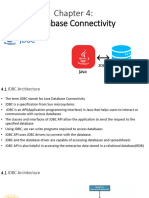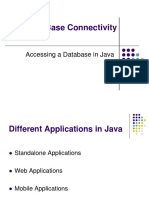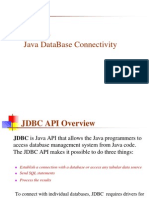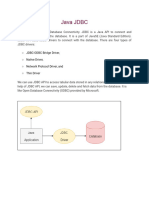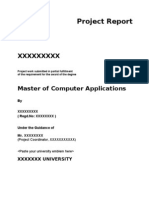0% found this document useful (0 votes)
182 views24 pagesJava JDBC Slideshare
The document discusses Java Database Connectivity (JDBC) and how it allows Java applications to connect to and interact with databases. It covers the basic JDBC components like the DriverManager, Connection, Statement, and ResultSet classes. It also describes the different JDBC architectures like the two-tier and three-tier models. Finally, it provides examples of how to use JDBC to create a database, execute queries, and insert data using prepared statements.
Uploaded by
kavita.mittalCopyright
© © All Rights Reserved
We take content rights seriously. If you suspect this is your content, claim it here.
Available Formats
Download as PDF, TXT or read online on Scribd
0% found this document useful (0 votes)
182 views24 pagesJava JDBC Slideshare
The document discusses Java Database Connectivity (JDBC) and how it allows Java applications to connect to and interact with databases. It covers the basic JDBC components like the DriverManager, Connection, Statement, and ResultSet classes. It also describes the different JDBC architectures like the two-tier and three-tier models. Finally, it provides examples of how to use JDBC to create a database, execute queries, and insert data using prepared statements.
Uploaded by
kavita.mittalCopyright
© © All Rights Reserved
We take content rights seriously. If you suspect this is your content, claim it here.
Available Formats
Download as PDF, TXT or read online on Scribd
/ 24



